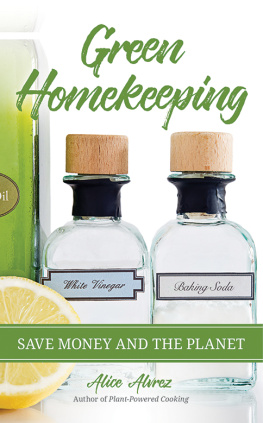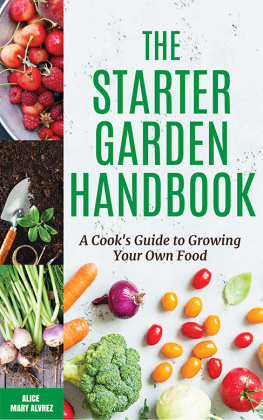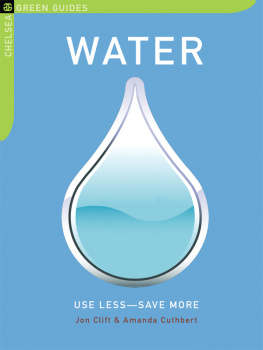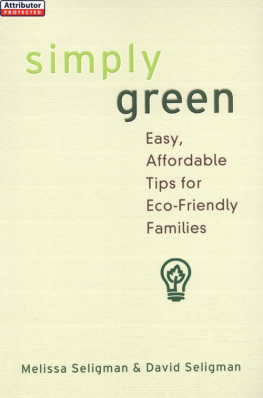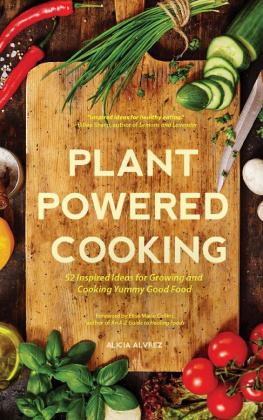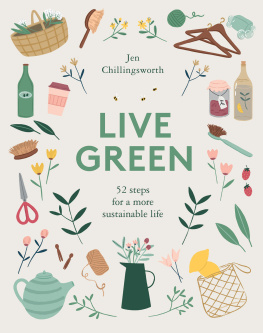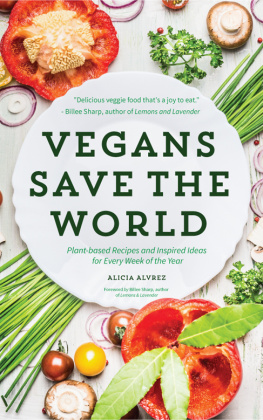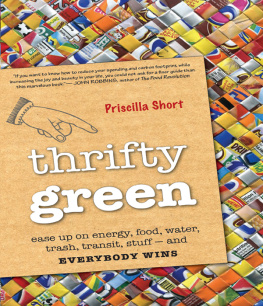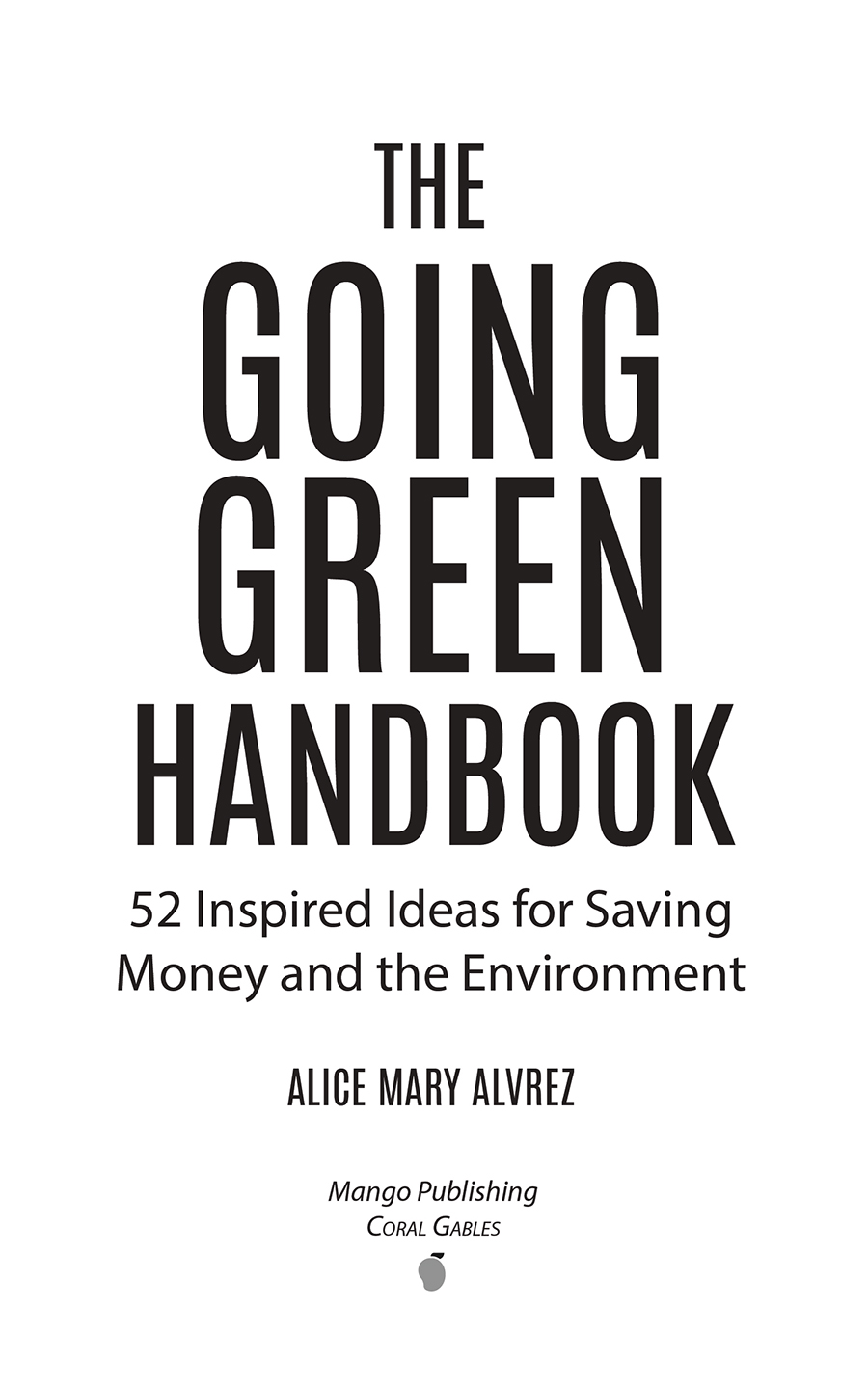
Copyright 2018 Alice Mary Alvrez
Published by Mango Publishing Group, a division of Mango Media Inc.
Cover Design: Elina Diaz
Theme and Layout: Marija Lijeskic & Elina Diaz
Mango is an active supporter of authors rights to free speech and artistic expression in their books. The purpose of copyright is to encourage authors to produce exceptional works that enrich our culture and our open society.
Uploading or distributing photos, scans or any content from this book without prior permission is theft of the authors intellectual property. Please honor the authors work as you would your own. Thank you in advance for respecting our authors rights.
For permission requests, please contact the publisher at:
Mango Publishing Group
2850 Douglas Road, 3rd Floor
Coral Gables, FL 33134 USA
For special orders, quantity sales, course adoptions and corporate sales, please email the publisher at or +1.800.509.4887.
The Going Green Handbook: 52 Inspired Ideas for Saving Money and the Environment
Library of Congress Cataloging
ISBN: (paperback) 978-1-63353-760-6, (ebook) 978-1-63353-761-3 Library of Congress Control Number: 2018941610
BISAC category code: SEL039000SELF-HELP / Green Lifestyle
Printed in the United States of America

Out of all those millions and millions of planets floating around there in space, this is our planet, this is our little one, so we just got to be aware of it and take care of it.
Paul McCartney
table of contents
F
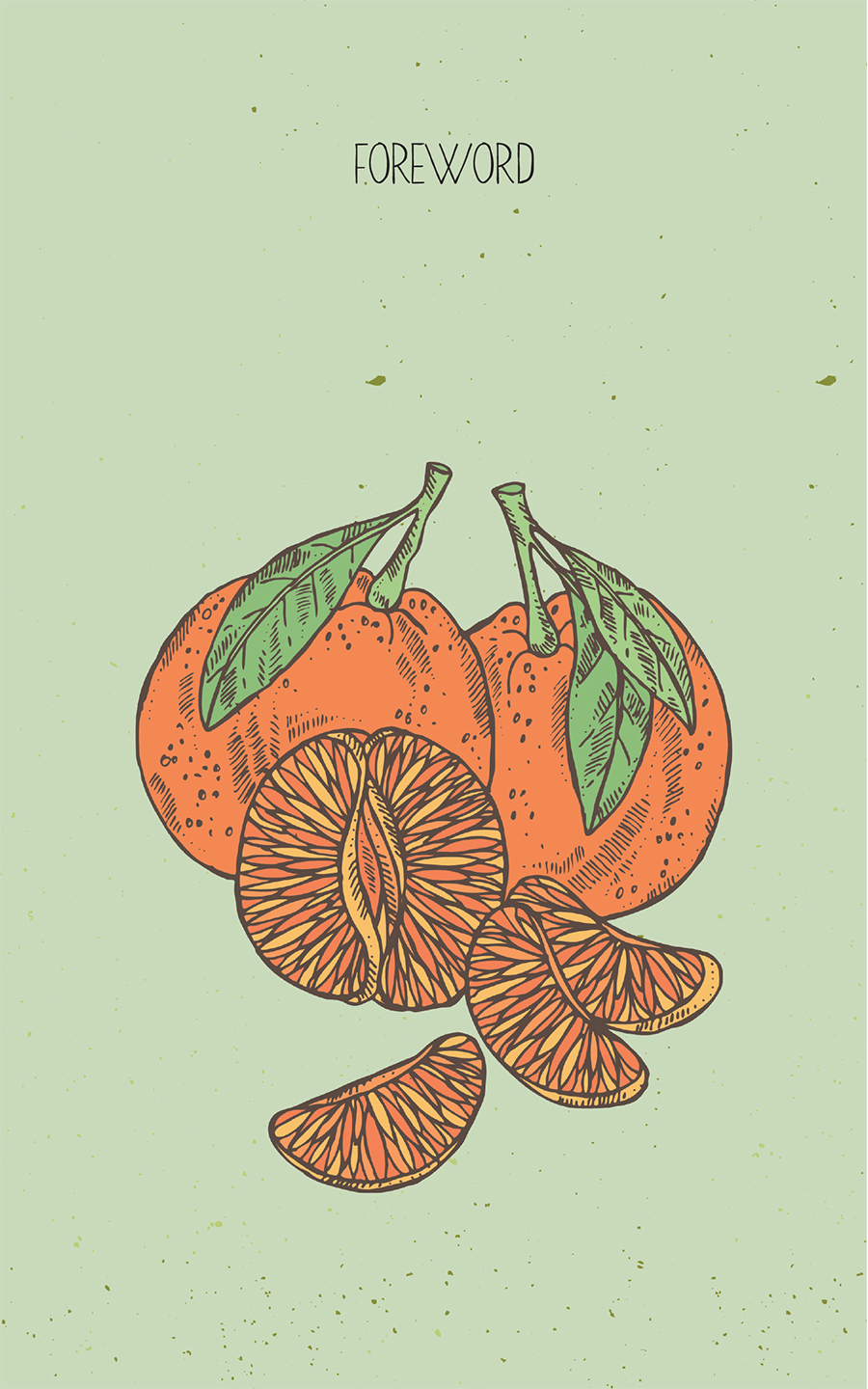

U se Little, Live Big
T he way the green movement has gathered steam in the last five years and entered mainstream culture seems as if it would be an environmentalists dream come true. Recycling is quite fashionable as is composting. Finally the neighbors have stopped gossiping about that pile of vegetable scraps you keep in your backyard or asking what is going on with your front yard rain barrel. Nevertheless, the idea of using less has gotten lost along the way.
Somewhere between the advent of curbside recycling and upcycling, both of which have been embraced by even the most recalcitrant, reducingthat basic tenet of the environmental movementhas been strangely absent from the conversation. In an era when environmentalism has become increasingly trendy, this concept has been almost entirely skipped over, and its not hard to understand why: nothing is more antithetical to our consumer culture than the idea of simply not consuming.
This means that while we keep hearing green in the new black, the concept of reducing anything has been entirely abandoned. Its ironic, really, because the ability to reduce is perhaps the most important aspect of any environmental movement: reducing conspicuous consumption, reducing useless stuff, reducing your waste, and eventuallyas a result of these endeavorsbeing able to reduce the amount of time you spend shopping, cleaning, and organizing your possessions.
My big suggestion would be to adopt the life motto of Use Little, Live Big. I joke to my friends that my afternoon Sunday church service is at the local Recycling & Reuse Center. It is definitely a ritual for my boyfriend and me. In fact, we just came back from there and saw many a well-loved item go to a joyous new owner.
You should only have possessions you really love; dont let your things possess you. I have a neat-looking outbox on my front porch I fill during the week with items I can take to the Reuse Center at my neighborhood recycling center. As the days go by, magazines, extra pots and pans, odd cups and dishes, old electronics and anything that no longer has a place in my home goes there. My partner and I go there every weekend and it simply feels wonderful. The center has a lot of regulars and we are now recognized as purveyors of 100 percent discount bounty such as scented candles, barely-worn scarves, office supplies, odd crockery, and superb magazines as we are a household of voracious readers. I really get a kick out it when white-bearded elders run up to me with my scented candles and ask What does it smell like? They are delighted with Sugar Cookie Vanilla and Cinnamon Spice and such. I have seen amazing trades at the Reuse Center and witnessed a musician sit down and play a free sitar with virtuosity while a family with young children got a sorely needed washing machine and dryer. Moments like this remind me of the eco visionary teacher and writer Starhawks novel, The Fifth Sacred Thing, depicting a future where people return to a barter system and live harmoniously in community.
The sign at the entry of the Reuse Center is certainly wisdom to live by:
Take only what you need and share anything extra with your neighbors.
And there is an upside, a big, beautiful upside, to this less is more lifestyle. And here it is: embracing the concept of reducing takes the least effort of all the environmental changes you can adopt. Its almost Zen in its simplicity because, in order to reduce, you spend a lot of time not doing.
Keeping the decision to reduce at the forefront of your brain means you dont have to drive yourself insane comparing and contrasting eight different brands of fabric softener that claim to be eco-friendly, wading through the green washing and the jargon for hours before giving up and drowning your sorrows in a box of wine. You simply wash your hands of the entire thing and make the decision not to purchase fabric softener at all. Plus, all those chemicals are not good for you, for your kids, or even your pets.
It is also important to popularize the concept of reducing because the effort needed to become environmentally friendly, while not huge, is simple not worth it for many people.So, while the amount of effort needed to rinse an aluminum can, sort it into recycling bin, and take it to the recycling depot isnt huge, if youre not at least a tiny bit passionate about environmentalism the chances of this happening are pretty slim. Why? Because its still harder than doing nothing at all.
The Real Cost of Consumerism
With shopping being one of the most popular leisure activities in North America, buying things goes without notice most of the timeso much so, that an international movement, Buy Nothing Day, was started to curb this habit and draw attention to its almost involuntary nature. Shouldnt there be more than one Buy Nothing Day a year?
Going Green Is the Greatest
In closing, I will give you a few of my top tips to help you utilize the Use Little, Live Big lifestyle. One of my favorite aspects of going green is that it often is cost-free and involves nearly zero effort. For example, growing organic potatoes beets, potatoes and other root veggies need not involve even tilling the soil. You throw a bunch of straw or shredded, wet newspapers on top of the seeds and forget about it until it is harvest time. I love it when you can be really lazy and save the planet in the process!
Zen and the Extremely Easy Art of Organic Potato Farming
Potatoes and beets are a high return for your labor. To me, the best way to grow both is the worlds laziest way to garden; I remember reading about it when I was ten in a book by Thalassa Crusoe, a pioneering organic gardener. I was fascinated that you could grow root vegetables without even needing to turn any soil. You can grow potatoes, yams, etc., under straw! Simply cut up mature potatoes that have eyes or the fleshy tubers sprouting out of the flesh of the potato, making sure each piece has an eye. This will yield a new potato. After you plant or place the seed potatoes chunks on the ground, put loose straw over the pieces and between all the rows at least 46 inches deep. When the seed pieces start growing, your potato sprouts will emerge through the straw cover. How easy was that? Crusoe also said you could do the same under wet, shredded newspaper but straw is more organic.
Next page

